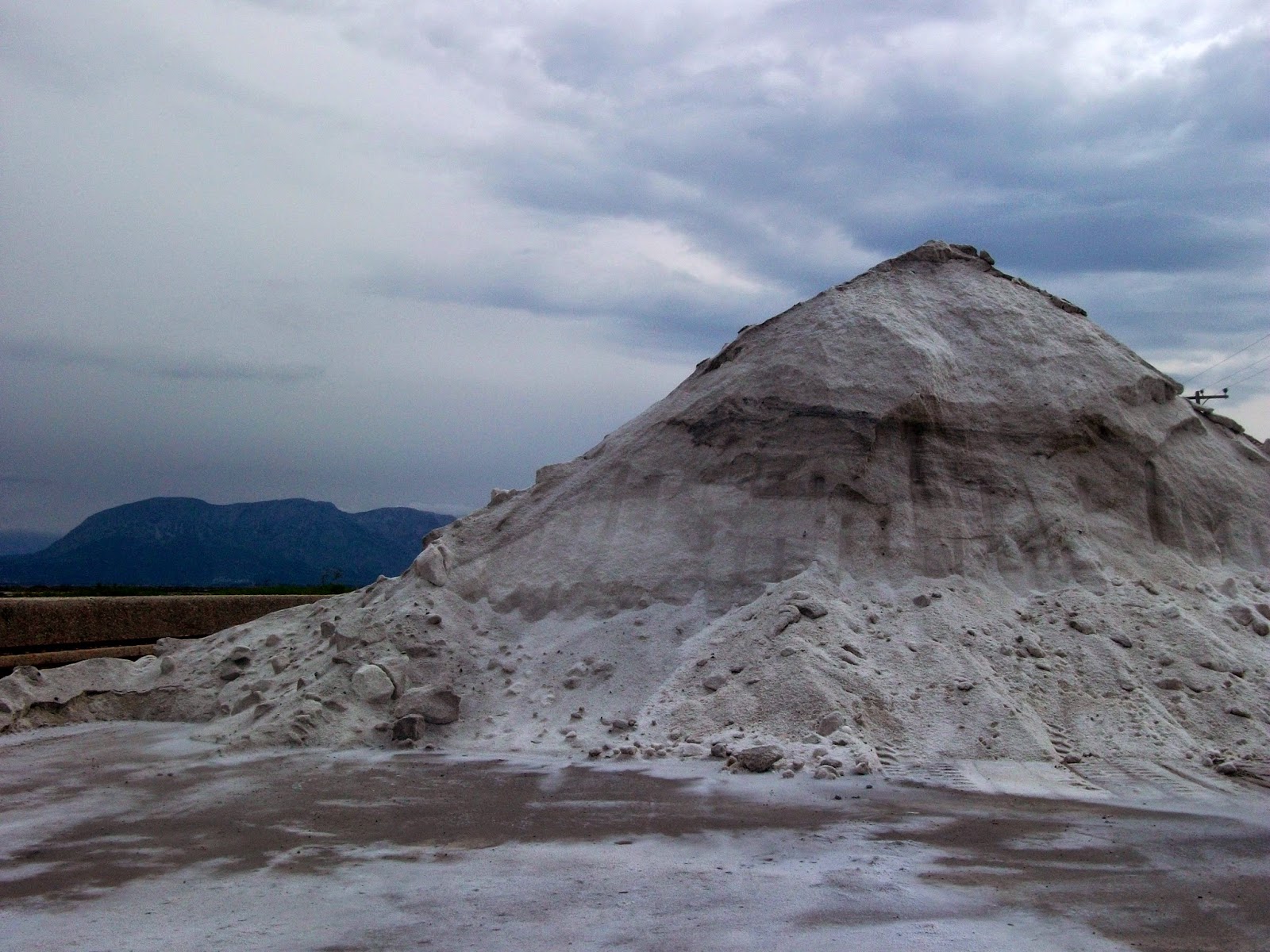 |
| In Messolonghi's Museum of History and Art, Delacroix's 's painting of Elefteria (freedom) mourning the fall of Messolonghi, after the long Turkish siege of 1826 |
The area was called Mezzo Langhi by the Italians, a phrase meaning
"between the lakes".
Messolongi
surprises me, though what did I expect? Some run down village, a
meagre scattering of houses, where people kept chickens and a goat or
two, in their back yards? Perhaps I was remembering
a
description I'd
read of Messolonghi
of
almost
two centuries ago, when Byron spent his last days there, a remote
place where people scratched a living from the soil. A place of
revolution, for the Greeks were fighting for their independence,
under attack by the Turkish fleet. A besieged place, of unimaginable
privations, where Byron himself succumbed to fever, close to the blue
waters of the lagoon.
But
this bright and vivid town is
nothing like that, it has
something of France about it, of a southern small town by the sea
like Le Grau du Roi, a bit like that, but also a liveliness that's
more Italian and a good pinch of Balkan energy too. The main central
square, named after Markos Botsaris, one of the great heroes of the Greek War of Independence, has a sunlit
fountain
playing in the middle, and cafés on every side.
I am welcomed by V, the Director of the Messolonghi College, and we are later joined by G, a journalist friend of his. We tour the lakes, the Museum, the Byron Library and an ouzo shop whose patron is a friend of G's, before having coffee in a cafe off Botzaris Square, where I meet Rosa Florou, President of the Messolonghi Byron Society
 |
| Ouzo Palace |
One
thing that has changed little or so I imagine, is the sea, the
lagoon, and the fishing. G takes V and I on a
tour of the lake area which is very like la
petite camargue
only smaller. Lots of birds nest and live there among the reeds.
You
can see flamingoes here too, G says, but if
there's a wind as
today, they go to the other side of
the lake.
Then
we see some – a little distant and I might not
have known what
birds they are, they look white to
me but G says they are flamingoes. They're not
standing in the water, showing off their long
pink
legs but floating on the surface, the way birds do, the
way they
can, their closeness to the water, balanced,
moving up and down among
the waves, like foamy
wave crests, like a tangled frond of seaweed,
like a
piece of flotsam, a spar of wood, smoothed and
rounded by its
passage, softened with salty ocean
travel, don't you envy the birds
this intimacy with the
ocean?
This
is the old salt works, says G and we touch
the pyramid, coarse
and white and patchy like old
snow and because it has been damp, the
salt's grown
hard, it has a crust like toffee and G digs into it and
scoops me out a handful.
Fishermen's
huts rise up on stilts above the glassy
surface of the water.
They
are wooden and elegant, festooned with nets,
and a narrow wooden
walkway leads to the built-up
tracks and surfaced roads, the veins
that carry
fishermen and sight-seers gazing through binoculars
at the
aloof flamingoes. For the water does not carry
us, the way that birds
can float and settle, can dream
and dip as sunlight flashes and the
slim boats with
their long arching lines, they too float and no wild
weather seems to touch the jetties and the stilts or
rock these
boats, crafted it would seem, of thinnest
shaving from some long tree
trunk, curling at the
end, encrusted like lichen on bark, with tiny
clinging
barnacles.
G
shows us this landscape he belongs to, which
has long scores and
echoes of a constant dialogue of
time with light, with air and
scented marsh reeds,
flowers, the sourness of dried mud and salt, the
constant currents of sea breezes, and the narrow
streets of this
small town as precise, defined and
delicate as a raised pattern on a
shell. Streets with
the wide, sand-coloured awnings pulled across the
pavement,
the
flour and dough and seed colours of the bench
outside the bakery,
these arresting colours of black
seeds and olive grey green, pumpkin
dark green and
russet honey, cream colours of dried stalks and of
beaten egg whites and coffee-coloured foam left
round a cup's rim.
Dialogue
of colour, sunlight, marsh water and birds
fabricating secret nests
behind a screen of reeds.
And
V and I follow in his wake, he is guide and
recorder, he is native in
this place, born out of it and
into it, as native means, threaded in
its grasses,
bleached by the same light as stones and plants,
burnt
by the same sun, and by the moisture lifting off
the surface of the
sea.
Most
of the old buildings from two centuries ago were
destroyed during the
Greek war of independence.
G shows us one which still survives.
It's
just across the road from the site of the house
where Byron lived
when he was here. A memorial
marks the spot.
The modern building below is home to the
Messolonghi Byron Society & Research Centre
and
Library
Byron
statue outside the Byron library.












Comments
whereabouts on a map is it?
have been a bit caught up in smells and so not very communicative, but miss you :-)
have a lovely time and i shall look for your next blog entry!
Txxx
Mxx